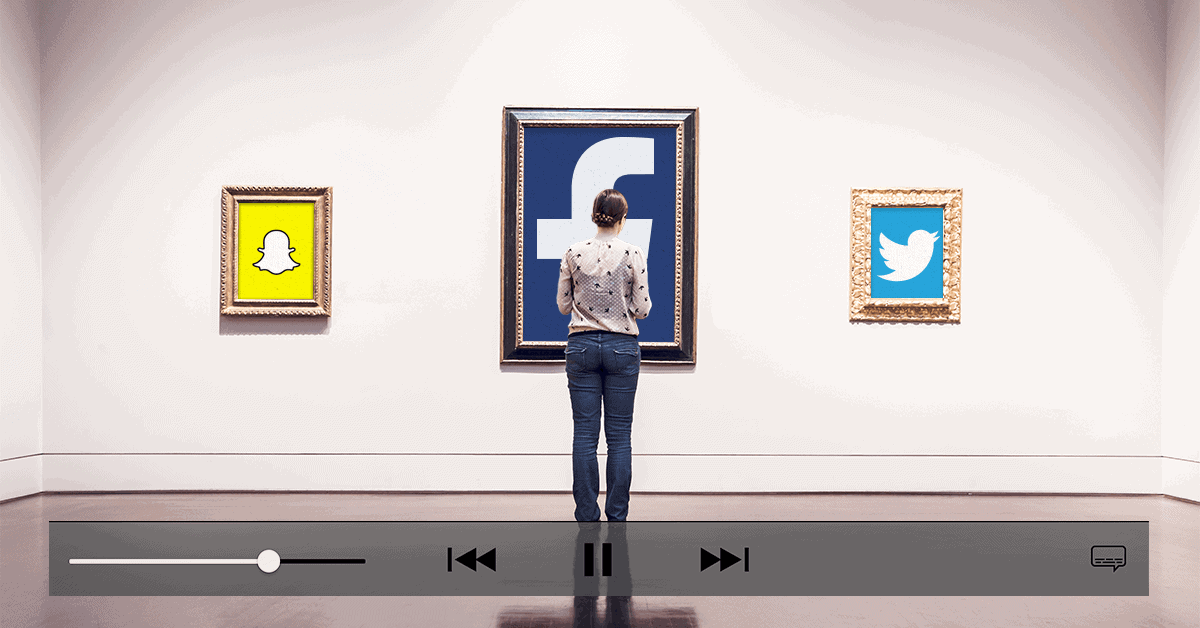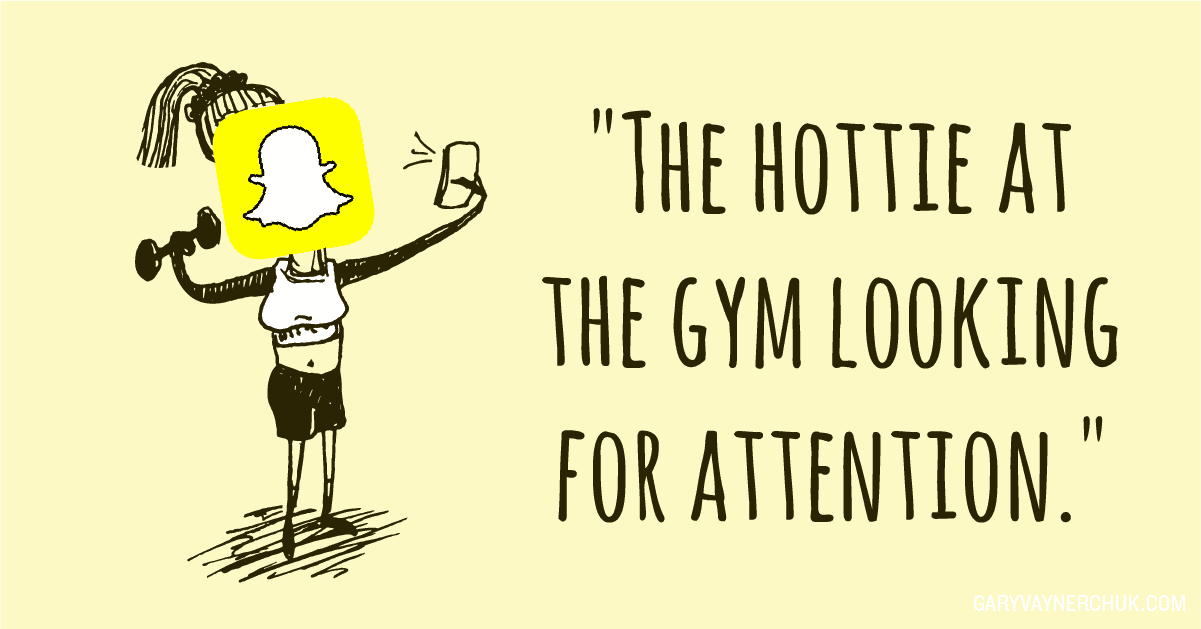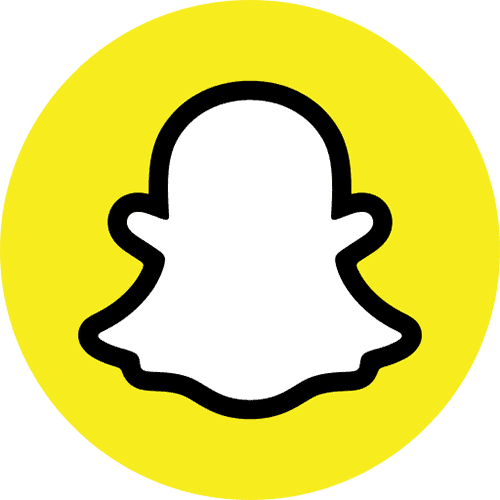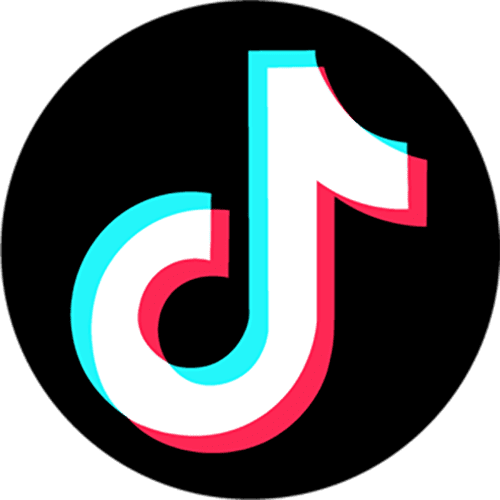The single most important strategy in content marketing today is video. Whether it’s video on Facebook, Twitter, Snapchat or Youtube, the content you need to be thinking about creating and marketing on social for your business is video. Period.
No matter what you’re selling, no matter what your company does, if you don’t have a video marketing strategy for the biggest video platforms, you are going to lose. And in case you haven’t noticed, the platforms of distribution for video content online have shifted drastically over the last 18 months. Facebook is getting more daily minutes watched than YouTube, Snapchat’s daily views are now in the billions, and video on Twitter has taken listening and one to one branding to a whole new level.
Now, maybe I’ve scared you a bit, but don’t worry because I’m here to make sure you understand the landscape of all the biggest social platforms that matter right now. By the end of this article, you’ll have the information you need to kill at video. I promise.
YouTube Video is a Library of Content
Let’s get started with the obvious, the granddaddy of video online: YouTube. Here is why I won’t be drilling down on strategy for YouTube in this article. I know, you’re already skeptical, but hear me out. YouTube is huge. I’m not denying that. It’s a library of video content: 300 hours worth of video content are pushed to YouTube every minute. Heck, I even got my start there with a popular show about wine. It helped me launch a career and grow a personal brand. And for that reason, I still find YouTube valuable for business. In fact, I have another show on there now that is doing similar things for me that the earlier wine show did. Growing my brand. Reaching new audiences. So it’s clear that over the years, YouTube continues to be a video content giant for businesses and personal brands.
But the problem with YouTube is that it’s in a downward trend compared to Facebook’s 4 billion daily video streams; A number that’s only going to continue to grow with time.
Due to its sheer size, there’s a ton of competition amongst videos on YouTube all fighting to be seen. When you have a platform with over a billion users, all wanting the same thing (exposure), it’s going to get noisy. And it’s been figured out. Marketers have ruined it. Because of that, it’s much harder to break through the noise which makes hosting your content on the platform much less valuable.
Additionally, it doesn’t have the capabilities of other growing video platforms, and so far, they haven’t shown signs of catching up.
“So, what exactly are those capabilities other platforms have?” you might ask.
Well, here’s the big one: data. Data data data. And the leader in that domain is, without a doubt, Facebook.
Video on Facebook is Good at Everything: Smart, Shareable & Personal
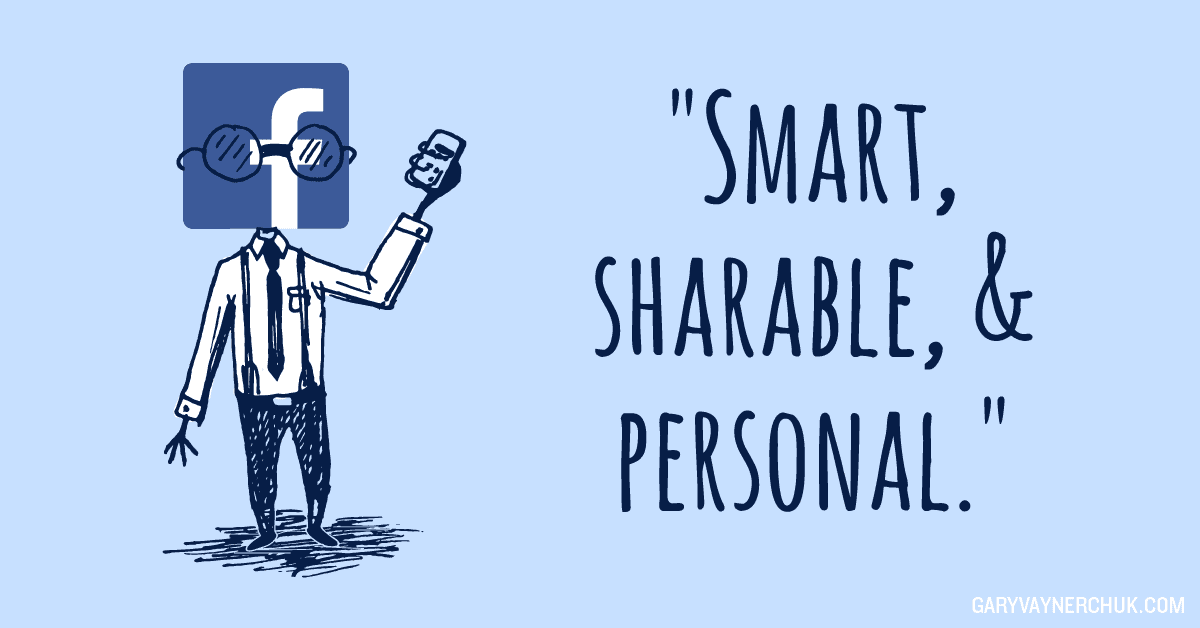
Facebook video for my brand has become the best way to reach my fans at scale. Couple that with their new video ad products for sales and direct response and the fact that they’re the greatest data company of all time for marketers and you have some serious reasons to spend some real money on Facebook video ads and video content for Facebook.
Think about it for a second. If you’re creating video content for YouTube, and not putting those videos onto Facebook as well, your brand or business is losing distribution – not to mention relevancy. No questions asked.
And I don’t mean cross channel promotion by pasting a link to YouTube on your Facebook page as a status update. I mean uploading the video natively to Facebook, so that it lives in your Facebook page’s video content. Why? Because right now , Facebook’s Newsfeed algorithm is placing an enormous amount of weight on videos, otherwise known as “reach.” When you upload videos natively, instead of linking out, you have a much higher chance of your video being seen by your community (and new fans, too). Google and Facebook are competitors, so if you think Facebook wants to have YouTube links perform well in their Newsfeed algorithm, you better think again.
YouTube should honestly be concerned; Facebook is already on its way to becoming a massive competitor when it comes to video marketing and content distribution. They are sitting on an enormous amount of targetable consumer data. It creates the ultimate marketing machine. For example, let’s say you upload a video natively, like I talked about before, about the best places to eat ice cream outdoors in your town. You could then spend money on a sponsored video to directly market your brand’s video to people who 1) love ice cream and 2) live in your area and 3) have kids. Automatically, you’re reaching the audience who is most interested and profitable to your business — Which is great, because you’re not wasting anyone’s time, and you’re truly reaching the consumers who will be interested in your business’s offering.
Get it? Facebook gives you the ability to target consumers like we’ve never seen before in digital.
And Facebook knows. They’ve added features in the last few months that point to the fact that they are increasing the amount of attention they give video: view count, embedding options, video for website conversions. This means there is more to come.
But while Facebook should be an enormous priority, don’t ignore the other social channels that might be more intune with your brand. There are a ton of other social channels to be creating video content for that offer what marketers love — reach and attention.
I’ll go into a couple of the biggest ones.
Video on Twitter is for Engagement: Direct, Social, & Real
Twitter’s new video product that was released late January has changed the way I use and consume the platform. Video on Twitter truly is social and the best way to use Twitter video is by connecting and engaging, rather than just pushing. As Twitter has grown in size, it’s become a listening platform. Six years ago, I could send a tweet and get more engagement on it than I do now. I had less of an audience, but the audience was paying closer attention. It was more serious. Now the amount of information and users on that platform has gotten so intense that it’s hard to have that same engagement. It’s hard to get anyone’s attention.
That’s why the game, the real way to win with Twitter video, is through engagement — using it as a “pull” rather than a “push.”
The truth is, people respond to effort. When a celebrity favorites your tweet, you get excited. Someone you admire likes a photo of yours on Instagram, it makes you feel good. Because, in reality, it’s not about the 100th of a second it takes to double tap that photo — it’s about the fact that they looked at your profile. They chose a photo. They saw it. And they “liked” it. That interaction, which takes all of 5 or 6 seconds, really touches people in a way that is unique to the powers that be on social.
With Twitter’s new video feature, they’ve been able to take that feeling to the next level.
All you have to do is get in there and engage. Reply to a tweet using the camera option, select video, and start talking. It takes me nine to twelve seconds to make a video and reply, but those extra seconds hold a lot of meaning. Not to mention it’s more personal, visual, and we are living in a world where the visual is often regarded as a better engagement than the written.
There’s also more room to set the tone. A lot of things can get lost in a tweet. I might say “thnx” but that person isn’t 100% sure what my tone really was. But with Twitter video, the message comes across loud and clear.
It’s fifteen seconds of your attention on one person instead of two seconds. Do you know how much that means? Time is so incredibly precious to people. We are in control of it and we hate when it’s wasted. But you know what we value more? When someone else decides to lend their most precious asset to us.
That is what excites me most about Twitter video. Giving time to people. More time. Personalized time. And that is awesome.
Snapchat Video is the Hottie at the Gym: It’s All About Attention
Lastly, Snapchat.
Snapchat is huge right now.
More than 60% of U.S.13 to 34 year-old smartphone users are Snapchatters.
They now have more than two billion video views a day.
And there are a few interesting things about Snapchat as a platform when it comes to how it works.
Snapchat gets your undivided attention because, in order to view a video, you have to have your finger on the screen. ( Edit: since this article, Snapchat has changed this feature. Read more about it here.)
It’s also one of the only platforms in which you can draw creative on top of the video, making for some awesome Snapchat exclusive artists like Shonduras.
Most importantly, videos have a maximum life of twenty four hours, or less if the users chooses to make it so. A video can last down to a second. The urgency to see something before it disappears can be a huge factor. I had a very successful start on the platform by Snapchatting users telling them to screenshot the snap before it disappeared and post it to Twitter to get a reply from me. People respond to that urgency.
And now, marketers are getting really serious about Snapchat as a platform to reach an enormous number of people due to some key changes Snapchat has released. Earlier this year, Snapchat launched the Discover section of the app. It’s a feature that allows users to receive content provided by media companies. Current participants include National Geographic, Vice, ESPN, and more. Eleven participants in all. It’s a very serious play on the company’s part because it puts it in a very aggressive place with the overall user interface of the app. It completely changes how the app is both perceived and used.
Not to mention Snapchat is now basically handing brands the thirteen to thirty-four demo through that Discover feature. Brands can have ads pre-roll before the content.
And while you may not be able to afford the pre-roll program they have, just the mere fact that these big brands and media companies have signed on should tell you something. Teens and young adults are using Snapchat all day and night. It’s one of their main forms of communication, and because of that, you need to care about it and learn to talk to them on it.
Convinced?
Whether your answer to that question is a yes or a no, you shouldn’t miss out on this enormous demographic just because you don’t get how they’re talking to each other. If you want to learn, you need to get in the trenches. Become a practitioner. Download Snapchat. Play around with it. Figure it out.
Facebook is becoming TV’s competitor
Bottom line: there is a f**k ton going on in video right now, and it’s the #1 way to capture the attention of the audience you’re going after for your small business, brand, or company. All these platforms use video differently and they all have their own social context that needs to be respected and taken into consideration. Take the time, put in the work, and produce the videos that will move your business in the right direction.
I’m not saying you should give up on YouTube. It’s still extremely relevant and important. But if you’re creating content for YouTube, throw that shit on Facebook as well. Reply using Twitter video. Stop being intimidated by Snapchat.
And let’s not forget: competition breeds innovation. I hope YouTube gets scared a little here; I hope Google is paying attention. It might lead to better quality innovation coming out of YouTube. They’ve been pretty stale for a half decade, and now these disruptors will push them.
I’ve mentioned all of the above without even going into the brand new world of live streaming (look for that article soon, though.) The bottom line is that video is king right now; it’s still evolving and changing rapidly. We’re living that. And Facebook Video is being grossly underestimated. Don’t get left behind. Get into it.

